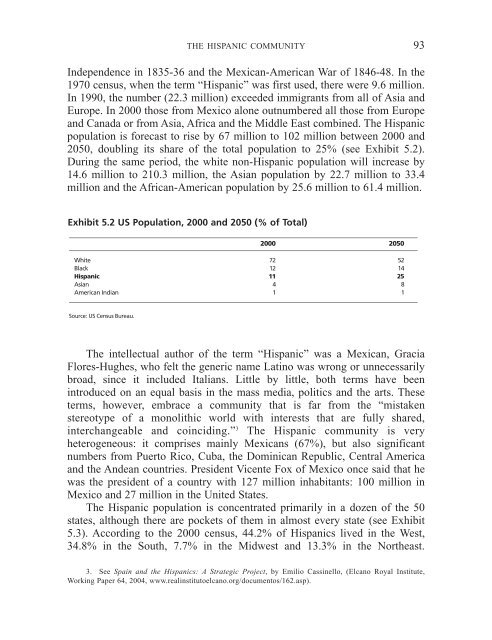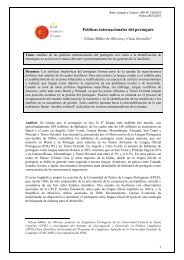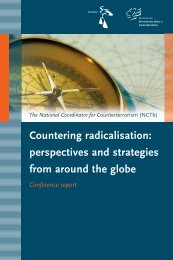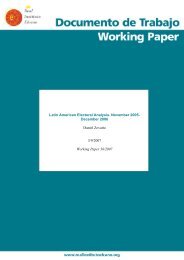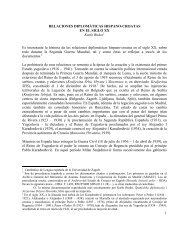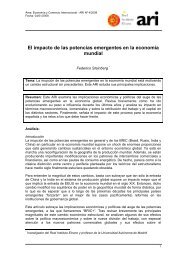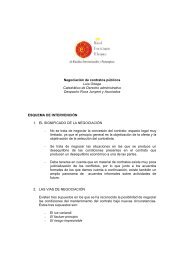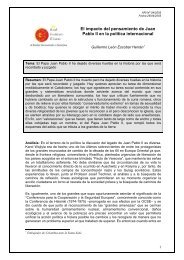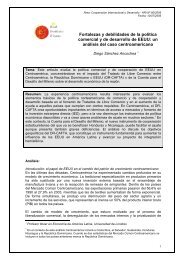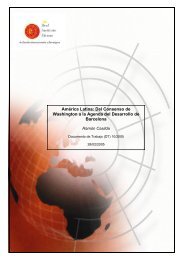Spain and the United States - Real Instituto Elcano
Spain and the United States - Real Instituto Elcano
Spain and the United States - Real Instituto Elcano
Create successful ePaper yourself
Turn your PDF publications into a flip-book with our unique Google optimized e-Paper software.
THE HISPANIC COMMUNITY 93<br />
Independence in 1835-36 <strong>and</strong> <strong>the</strong> Mexican-American War of 1846-48. In <strong>the</strong><br />
1970 census, when <strong>the</strong> term “Hispanic” was first used, <strong>the</strong>re were 9.6 million.<br />
In 1990, <strong>the</strong> number (22.3 million) exceeded immigrants from all of Asia <strong>and</strong><br />
Europe. In 2000 those from Mexico alone outnumbered all those from Europe<br />
<strong>and</strong> Canada or from Asia, Africa <strong>and</strong> <strong>the</strong> Middle East combined. The Hispanic<br />
population is forecast to rise by 67 million to 102 million between 2000 <strong>and</strong><br />
2050, doubling its share of <strong>the</strong> total population to 25% (see Exhibit 5.2).<br />
During <strong>the</strong> same period, <strong>the</strong> white non-Hispanic population will increase by<br />
14.6 million to 210.3 million, <strong>the</strong> Asian population by 22.7 million to 33.4<br />
million <strong>and</strong> <strong>the</strong> African-American population by 25.6 million to 61.4 million.<br />
Exhibit 5.2 US Population, 2000 <strong>and</strong> 2050 (% of Total)<br />
The intellectual author of <strong>the</strong> term “Hispanic” was a Mexican, Gracia<br />
Flores-Hughes, who felt <strong>the</strong> generic name Latino was wrong or unnecessarily<br />
broad, since it included Italians. Little by little, both terms have been<br />
introduced on an equal basis in <strong>the</strong> mass media, politics <strong>and</strong> <strong>the</strong> arts. These<br />
terms, however, embrace a community that is far from <strong>the</strong> “mistaken<br />
stereotype of a monolithic world with interests that are fully shared,<br />
interchangeable <strong>and</strong> coinciding.” 3 The Hispanic community is very<br />
heterogeneous: it comprises mainly Mexicans (67%), but also significant<br />
numbers from Puerto Rico, Cuba, <strong>the</strong> Dominican Republic, Central America<br />
<strong>and</strong> <strong>the</strong> Andean countries. President Vicente Fox of Mexico once said that he<br />
was <strong>the</strong> president of a country with 127 million inhabitants: 100 million in<br />
Mexico <strong>and</strong> 27 million in <strong>the</strong> <strong>United</strong> <strong>States</strong>.<br />
The Hispanic population is concentrated primarily in a dozen of <strong>the</strong> 50<br />
states, although <strong>the</strong>re are pockets of <strong>the</strong>m in almost every state (see Exhibit<br />
5.3). According to <strong>the</strong> 2000 census, 44.2% of Hispanics lived in <strong>the</strong> West,<br />
34.8% in <strong>the</strong> South, 7.7% in <strong>the</strong> Midwest <strong>and</strong> 13.3% in <strong>the</strong> Nor<strong>the</strong>ast.<br />
3. See <strong>Spain</strong> <strong>and</strong> <strong>the</strong> Hispanics: A Strategic Project, by Emilio Cassinello, (<strong>Elcano</strong> Royal Institute,<br />
Working Paper 64, 2004, www.realinstitutoelcano.org/documentos/162.asp).


